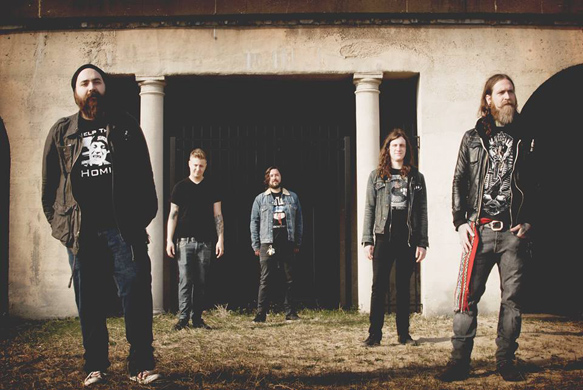Post-Metal saw its genesis in the 1990s, but truly reached its apex in the early 2000s. Neurosis had become a household name in the Metal community, Hydra Head Records was churning out more classic releases than ever, and the debate as to the validity of the term Post-Metal was on the lips of every contrarian within earshot. The two most important developments in the genre were the releases of Isis’ Oceanic in 2002 and Panopticon in 2004. With the inclusion of thoughtfully introspective Post-Rock passages, Sludge Metal-inspired grooves, and experimentation with electronics, Isis synthesized the loose ends left lingering by their predecessors Neurosis, Godflesh, and the Melvins, essentially giving Post-Metal a succinct and decided sound. As if all at once, a flood of Post-Metal bands took hold of the Metal underground. Where many sought to be little more than Isis replicants, groups like Rosetta, Mouth of the Architect, and Russian Circles took the reins and led the genre into new territory by eschewing the aloof “thinking-man’s Metal” attitude often displayed by these groups and replaced it with a more genuine approach. Chicago’s psychedelic Post-Metal powerhouse The Atlas Moth fits smoothly into this faction. Throughout their short, yet acclaimed discography, The Atlas Moth placed importance on attention-grabbing textural elements as well as crushing heaviness. Their trajectory proved to be an auspicious expeditionary experiment, slowly scaling back the purely Metal aspects of their sound in favor of a more reserved, calculating presentation in line with Post-Rock and Psychedelic Rock. The Atlas Moth continued this progression into 2014 with their third album The Old Believer.
The Atlas Moth abandoned the rigid Post-Metal conventions of one-dimensional heaviness. They took the Pelican approach and chose to embrace melody as the primary driving force of this album. This puts The Atlas Moth in an advantageous position, as they do not run the risk of becoming subject to the pitfalls of playing music with the intention of being overly heavy for its own sake. Songs like “Collider” and “The Sea Beyond” make use of The Atlas Moth’s fetish for ear-worm melodies. The Old Believer is also The Atlas Moth’s most forward-thinking record yet. “Halcyon Blvd.,” for instance, opens with a vibraphone lead that harmonizes with the bass, which is progressive even by Post-Metal standards. Similarly, “City of Light” conjures an extraordinarily palpable mood throughout its five-minute duration, weaving between heavenly synth patches and mid-tempo Post-Rock riffing. One would be remiss, however, to assume that The Atlas Moth had abolished their Metal roots on this release. In fact, they sound more unapologetic and ferocious than ever. The song “The Old Believer” begins with a riff so mean, it would make Mastodon stop to turn up the volume. While the aforementioned songs are excellent in their respective rights, The Atlas Moth truly shines on tracks like “Wynona” and “Jet Black Passenger,” where they integrate their Post-Rock and atmospheric Sludge Metal influences. The Atlas Moth’s generativity of these styles of music creates a marvelously unique expression of Metal. By the closing track, “Blood Will Tell,” listeners will be shocked just how catchy a Metal band of this caliber can be.
It is wondrous and impressive when an Extreme Metal act can release an album as toned down as The Old Believer and still remain true to themselves. The progression of The Atlas Moth’s music evolved into a sound so naturally their own that the resulting product straddles the boundaries of Post-Metal and Progressive Metal. The Old Believer may be The Atlas Moth’s most composed and thorough album to date. It is a cerebral release that does not let up on atmosphere. CrypticRock gives The Old Believer 4 out of 5 stars.







No comment